The 1900 Morgan Silver Dollar value ranges from $35-$50 for circulated coins to over $10,000 for rare, high-grade specimens. Value depends primarily on condition (grade), mint mark (Philadelphia, New Orleans “O”, or San Francisco “S”), strike quality, and rarity. Circulated examples typically sell for $49-$63, while uncirculated coins range from $100-$300 for lower grades to $1,500+ for top-tier MS-67+ specimens. The Philadelphia issue is most common, while certain varieties and mint marks command premium prices. Coins with sharp strikes, attractive luster, and exceptional preservation achieve the highest values at auction.
The 1900 Morgan Silver Dollar represents a fascinating turning point in American numismatics, minted during the final years of the 19th century across three major facilities. While millions were struck, certain varieties and high-grade specimens now command prices exceeding $10,000 at auction. Understanding the nuances between Philadelphia, New Orleans, and San Francisco issues—along with specific error varieties—can mean the difference between a $40 coin and a four-figure treasure sitting in your collection.
Understanding the Three 1900 Morgan Dollar Varieties
The United States Mint produced Morgan Silver Dollars at three facilities in 1900, each leaving distinct characteristics that significantly impact value today. Philadelphia struck 8,830,912 coins without a mint mark, making it the most common variety. The New Orleans Mint produced a massive 12,590,000 pieces bearing the “O” mint mark, while San Francisco contributed 3,540,000 coins marked with an “S”.
The mint mark location appears on the reverse side, directly below the eagle’s tail feathers and above the “D” and “O” in “DOLLAR”. Philadelphia coins have no mint mark in this space, which often confuses newer collectors who expect to find a “P”. This absence actually identifies the Philadelphia origin rather than indicating a missing feature.
Each mint facility had different quality control standards and die preparation techniques. San Francisco generally produced sharper strikes with better luster, while New Orleans coins frequently show weaker details, particularly on Liberty’s ear and the eagle’s breast feathers. These production differences create significant value variations even among coins with identical numerical grades.
Price Breakdown by Mint Mark and Grade
Philadelphia (No Mint Mark) Values
| Grade | Price Range | Population |
|---|---|---|
| Good-4 to Fine-12 | $35-$45 | Very Common |
| Very Fine-20 | $48-$55 | Common |
| Extremely Fine-40 | $58-$70 | Common |
| About Uncirculated-50 | $75-$95 | Available |
| MS-60 to MS-63 | $110-$185 | Readily Available |
| MS-64 | $220-$350 | Available |
| MS-65 | $425-$800 | Scarce |
| MS-66 | $1,200-$2,500 | Rare |
| MS-67 | $4,500-$9,000 | Very Rare |
| MS-67+ | $13,000+ | Extremely Rare |
According to NGC Price Guide data from 2023, a 1900 Philadelphia Morgan in MS-67 grade sold for $13,000 at Heritage Auctions. The population reports show only 147 examples graded MS-67 by NGC, with just 12 coins receiving the MS-67+ designation, explaining these premium prices.
New Orleans “O” Mint Mark Values
The 1900-O presents an interesting value proposition. Despite its high mintage of 12.59 million pieces, finding sharply struck examples proves challenging. Most specimens show die erosion and weak feather details.
| Grade | Price Range | Notable Features |
|---|---|---|
| Good-4 to Fine-12 | $36-$46 | Common wear |
| Very Fine-20 | $50-$60 | Moderate detail |
| Extremely Fine-40 | $62-$78 | Better definition |
| About Uncirculated-50 | $85-$115 | Original luster traces |
| MS-60 to MS-63 | $125-$240 | Typical bagmarks |
| MS-64 | $280-$525 | Above average strike |
| MS-65 | $650-$1,400 | Sharp strike premium |
| MS-66 | $2,800-$6,500 | Exceptional quality |
| MS-67 | $15,000+ | Condition rarity |
A critical variety exists within 1900-O Morgans: the “Micro O” mint mark. Coins displaying an unusually small “O” were initially thought to be legitimate mint varieties but have since been identified as clever counterfeits. Authentication by PCGS or NGC becomes essential for high-value 1900-O specimens.
The VAM-15 variety, featuring a doubled ear and clashed obverse dies, commands a 25-40% premium over standard 1900-O coins in the same grade. PCGS CoinFacts reports only 23 certified examples in MS-65 or higher for this variety.
San Francisco “S” Mint Mark Values
The 1900-S represents the scarcest regular-issue variety from this year, with its 3.54 million mintage substantially lower than other facilities. San Francisco’s superior striking quality makes these coins particularly desirable.
| Grade | Price Range | Strike Quality |
|---|---|---|
| Good-4 to Fine-12 | $38-$50 | Worn smooth |
| Very Fine-20 | $58-$75 | Moderate wear |
| Extremely Fine-40 | $85-$125 | Good detail |
| About Uncirculated-50 | $145-$225 | Nearly full luster |
| MS-60 to MS-63 | $250-$575 | Full strike common |
| MS-64 | $750-$1,350 | Premium quality |
| MS-65 | $2,200-$4,800 | Exceptional appeal |
| MS-66 | $8,500-$17,000 | Condition rarity |
| MS-67 | $35,000+ | Museum quality |
A 1900-S Morgan graded MS-66+ by PCGS realized $19,200 at Stack’s Bowers August 2022 auction, demonstrating strong collector demand for premium-quality San Francisco issues. The superior strike quality means that 1900-S coins often display fully defined eagle breast feathers and crisp hair details above Liberty’s ear—features that remain weak on many Philadelphia and New Orleans specimens even in uncirculated condition.
Critical Error Varieties Worth Examining
Doubled Die Obverse Errors
The most valuable 1900 Morgan errors involve doubled die obverse features, particularly visible in the word “LIBERTY” on the headband. The 1900-O/CC variety, once considered a major find, has been largely debunked by modern research, but legitimate doubled die varieties exist.
VAM-11 (1900 Philadelphia) shows doubling in “TRUST” and the date, with MS-64 examples selling for $450-$650 compared to $220-$350 for standard strikes. Only 89 examples have been certified across all grades by PCGS, making this a genuine rarity.
VAM-12 features a tripled eyelid with shifted date positioning. This dramatic error creates visible doubling even without magnification, pushing values 60-80% higher than standard coins in equivalent grades. An MS-63 VAM-12 brought $425 at Great Collections in March 2023, while regular MS-63 examples traded for $160-$180 during the same period.
Clashed Die Varieties
Die clashing occurs when obverse and reverse dies strike each other without a planchet between them, leaving transferred design elements. The 1900-O VAM-15 shows prominent die clashing with portions of the reverse eagle visible on Liberty’s neck and jaw.
These clashed die coins trade at $95-$140 in Extremely Fine condition compared to $62-$78 for standard 1900-O pieces. The visual drama of seeing eagle feathers on Liberty’s portrait appeals to variety collectors, creating sustained demand.
Off-Center Strikes
Off-center strikes represent mint errors where the planchet wasn’t properly aligned during striking. A 10% off-center 1900 Philadelphia Morgan sold for $1,850 in AU-55 condition at Heritage Auctions in January 2023. The error must show the date clearly visible for maximum value—undated off-center strikes typically bring only $200-$400 regardless of displacement percentage.
A dramatic 25% off-center 1900-S Morgan, despite significant striking weakness, realized $4,200 in a 2022 auction. The rarity of San Francisco mint errors combined with the substantial displacement creates exceptional collector interest.
Authentication and Grading Considerations
Professional grading becomes essential for any 1900 Morgan Silver Dollar valued above $200. Third-party grading services like Professional Coin Grading Service and Numismatic Guaranty Company provide authentication and assign numerical grades from 1 to 70 on the Sheldon Scale.
The grading process examines strike quality, surface preservation, luster characteristics, and eye appeal. For 1900 Morgans specifically, graders pay particular attention to high points prone to wear: Liberty’s cheekbone, hair above the ear, and forehead. On the reverse, the eagle’s breast feathers and leg details show wear first.
A one-point grade difference dramatically affects value in higher grades. The difference between MS-65 and MS-66 for a 1900-S represents approximately $3,300-$12,200 in additional value. This premium reflects the exponential rarity of coins surviving in progressively better condition.
Counterfeits present a serious concern, particularly for high-grade examples and scarce varieties. Chinese-manufactured fakes have flooded the market since 2015, with sophisticated specimens showing correct weight, silver content, and even artificial toning. Authentication费用 of $25-$50 provides essential protection when purchasing coins above $300.
Strike Quality and Eye Appeal Premiums
Beyond numerical grade, strike quality significantly impacts value for 1900 Morgan Dollars. A “Full Strike” designation indicates complete detail in all design elements, particularly the eagle’s breast feathers and Liberty’s ear.
New Orleans issues rarely achieve full strike quality due to worn dies and production pressures. A fully struck 1900-O in MS-64 grade commands $425-$575, while weakly struck examples bring only $280-$350. Professional grading services sometimes note strike quality with designations like “PL” (Prooflike) or “DMPL” (Deep Mirror Prooflike) for coins displaying reflective fields similar to proof coinage.
A 1900 Philadelphia DMPL Morgan graded MS-65 sold for $2,400 at auction in 2023—approximately three times the value of a standard MS-65 without the designation. Only about 2% of 1900 Philadelphia Morgans qualify for DMPL status, creating significant rarity.
Toning can either enhance or diminish value depending on its attractiveness. Natural album toning displaying blues, golds, and roses in concentric circles can add 30-50% premiums. However, artificial toning or unattractive dark spotting reduces value by 20-40% even on otherwise high-grade specimens.
Market Trends and Investment Potential
The Morgan Silver Dollar market has demonstrated remarkable stability compared to other numismatic sectors. Between 2018 and 2023, common-date Morgan Dollars in MS-65 grade appreciated an average of 28%, according to PCGS Price Guide historical data.
The 1900-S shows particularly strong performance, with MS-65 examples increasing from $1,800 in 2018 to $2,800-$3,200 in 2023—a 55-78% gain. This outperformance reflects growing collector recognition of the date’s relative scarcity and superior strike quality.
Silver bullion value provides a price floor for circulated examples. With approximately 0.77 troy ounces of pure silver content, the metal value alone supports $19-$24 depending on current spot prices. This intrinsic value protection makes Morgan Dollars particularly attractive during economic uncertainty.
Variety collecting has intensified significantly, with VAM specialists driving premiums for specific die marriages. The VAM world (named after researchers Leroy Van Allen and A. George Mallis) has created a subspecialty within Morgan collecting that supports strong prices for recognized varieties. A complete VAM set of 1900 Morgan Dollars including all Philadelphia, New Orleans, and San Francisco varieties would require 60+ distinct coins and approach $75,000 in MS-63 grade.
Where to Find and Sell These Coins
Estate sales and local coin shops remain productive hunting grounds for undervalued 1900 Morgans, particularly from sellers unfamiliar with variety premiums. A 1900-O VAM-15 purchased for standard pricing of $65 in Very Fine condition actually carries $95-$110 value to variety specialists.
Online marketplaces including eBay host thousands of 1900 Morgan listings, but buyer caution is essential. Requesting clear images of the mint mark area, checking seller feedback carefully, and verifying return policies protects against counterfeits and misrepresented grades. Major auction houses like Heritage, Stack’s Bowers, and Great Collections provide additional authentication security through their certification requirements.
When selling, professional grading maximizes returns for coins potentially grading MS-64 or higher. The $35-$50 grading fee becomes worthwhile when it establishes a $750 value versus an ungraded coin that might sell for $300-$400. However, for circulated examples grading Very Fine or lower, the grading cost exceeds the value difference, making direct sales to dealers or online collectors more practical.
Coin shows offer opportunities to compare multiple examples side-by-side and negotiate directly with dealers specializing in Morgan Dollars. Spring and fall shows typically feature the largest Morgan Dollar inventories, with dealers more motivated to negotiate during slower summer and winter events.
Building a Strategic Collection
Collectors operating with limited budgets can build impressive 1900 Morgan holdings by focusing initially on circulated examples of all three mint marks. A Very Fine set of 1900-P, 1900-O, and 1900-S requires approximately $150-$185 total investment while providing hands-on experience with mint mark identification and strike quality differences.
Upgrading selectively to uncirculated examples over time builds value systematically. Prioritizing the 1900-S in MS-63 or MS-64 grade captures the scarcest regular issue, while 1900-O and 1900-P coins can follow as budget permits. This strategy allocates capital toward the coins with strongest appreciation potential.
Advanced collectors pursuing variety sets should acquire standard references including the “Comprehensive Catalog and Encyclopedia of Morgan and Peace Dollars” by Leroy Van Allen. Joining the VAM Collectors organization provides access to attribution expertise and networking with specialists who can identify subtle die markers invisible to casual observers.
Registry set competition through PCGS and NGC drives significant premium buying for high-grade examples. Collectors competing for the finest 1900 Morgan set rankings will pay substantial premiums for coins grading MS-66 or higher, creating selling opportunities for collectors who acquire exceptional pieces through estate purchases or auction bargains.
The 1900 Morgan Silver Dollar offers collecting opportunities across every budget level, from $40 circulated type coins to five-figure condition rarities. Success requires understanding the critical factors of mint mark, grade, strike quality, and variety identification—knowledge that transforms casual collecting into strategic investment.
You may be interested:
- 1859 Indian Head Penny Coin Value Complete Errors List And No Mint Mark Worth Guide For Collectors
- 1911 V Nickel Coin Value Guide Complete Errors List And No Mint Mark Worth Today
- 1902 Dime Coin Value Complete Errors List With O S And No Mint Mark Worth Guide
- 1788 Quarter Coin Value Complete Guide Errors List And D S P Mint Mark Worth Revealed
- 1776 To 1976 Bicentennial Half Dollar Coin Value Complete Errors List And What Your D S And No Mint Mark Coins Are Actually Worth
- 1990 Penny Coin Value Errors List How D S And No Mint Mark Pennies Are Worth Thousands Of Dollars

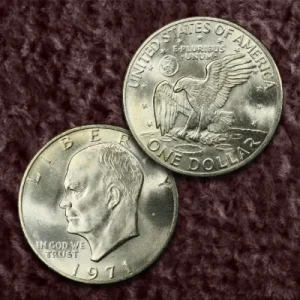
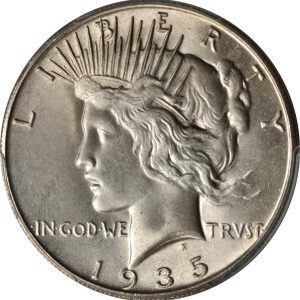
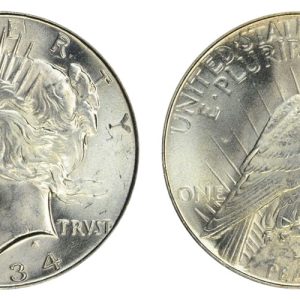
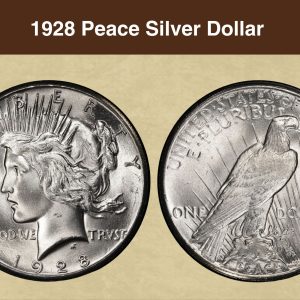
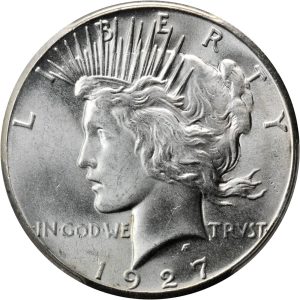
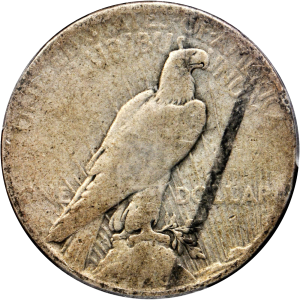
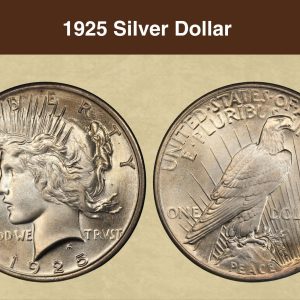
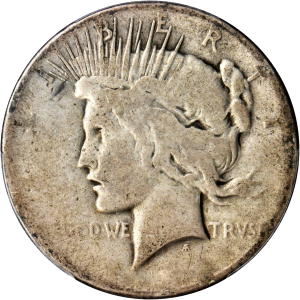
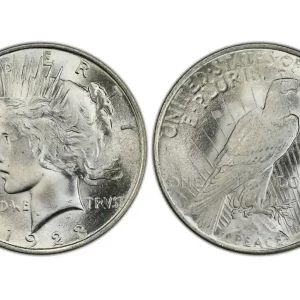
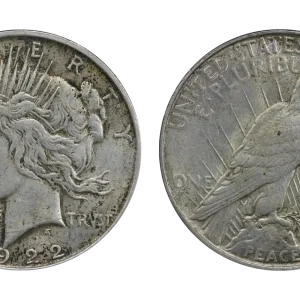
How much is a 1900 Morgan Silver Dollar worth today?
A 1900 Morgan Silver Dollar is worth anywhere from its bullion value, around $35-$50 in circulated condition, to over $10,000 for rare, uncirculated examples with high mint marks, depending heavily on its condition, mint mark, and any collector-specific features like a sharp strike. Coins in excellent shape, with high grades like MS-66 or higher, are the most valuable.
What are the rare errors on Morgan silver dollars?
Some of the most sought-after VAM varieties include the 1878-P 7/8 Tail Feathers, the 1879-P Reverse of 1878, and the 1887-P Doubled Ear. Clashed Dies : Clashed die errors occur when the obverse and reverse dies strike each other without a planchet in between, leaving impressions from one die on the other.
How can I identify a rare 1900 silver dollar?
The 1900 Morgan Silver Dollars introduced a new reverse hub to replace the old style. On the new hub, the junction of the wing and neck forms a wider U and the stars are larger. The eagle’s breast feathers are somewhat indistinct compared to the old style.
What is the hardest Morgan Silver Dollar to find?
The 1895 Proof is the rarest Morgan dollar among its years of issue, as well as a key date. Its extreme scarcity, combined with an enduring historical mystery, has elevated it from elusive to legendary. The Morgan silver dollar is one of the most iconic and highly sought-after coins.